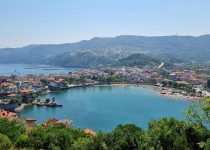Explore The Ancient City of Ephesus
Ephesus is an ancient city that lies on Turkey’s Aegean Coast near the seaside town of Kusadasi. It was formerly the hub of art and culture and today is one of the most famous tourist attractions in the country. Ephesus has been on the UNESCO World Heritage List since 2015, and millions of visitors’ flock to the city to see its magnificent ruins and learn about its history. So, find out more about what’s in store for you in Ephesus, Turkey.
History of Ephesus
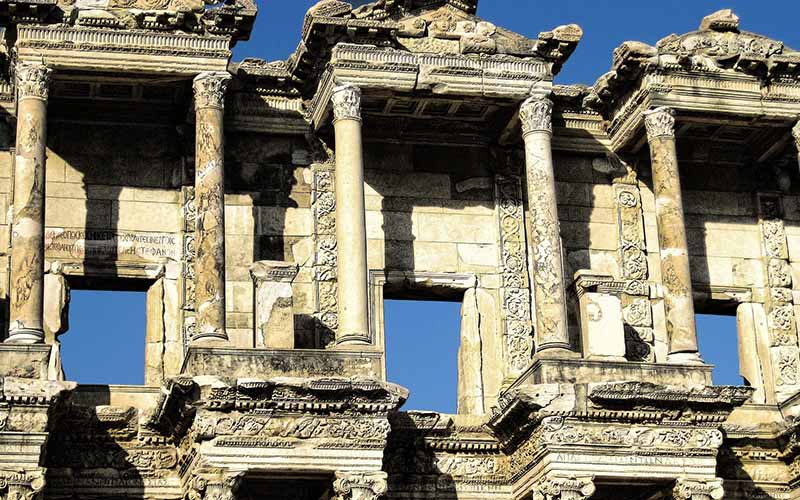
Ephesus is one of the oldest cities globally, and it is believed that the Carians and Lydians were the earliest inhabitants of this place. They built a fortified settlement on this site with direct access to the sea. However, it gained a lot of significance under the Roman Empire. It was the second most important city of the Roman Empire, and it saw staggering growth during their rule.
The city flourished under the ancient Greeks, who constructed the renowned Temple of Artemis, a striking structure. Ephesus was a melting pot of cultures that blended Greek customs and norms with its many neighbors, such as Rome and Persia.
Today, though the city is filled with ruins, visitors remain speechless watching the spectacular architecture, imposing marble columns, and the captivating remains of the library and the temples. It displays the intelligence, skill, and forward-thinking attitude of the Roman empire and its inhabitants —and how wealthy and influential the citizens were during those days.
Exploring Ephesus and its Historical Attractions
Ephesus is one of the most sought-after historical places in Turkey. The ruins are well-preserved and home to many structures deep-rooted in history, such as the Temple of Artemis, the Library of Celsus, the House of the Virgin Mary, and the Temple of Hadrian. You can stay in the nearby scenic village of Selcuk and plan day trips here. Other popular places that serve as a base to visit Ephesus are the port town of Kusadasi and the city of Izmir. Here are some of the unmissable places that must be a part of your bucket list when you visit this great archeological site.
Best Places to Visit in Ephesus
Ephesus is in the city of Selcuk, and you either book guided tours or explore the city by yourself. The visiting hours change according to the season, so checking the timings during your visit is recommended.
You can visit Ephesus between 8 am and 7 pm in the summer (April to October) and between 8.30 am and 6 pm in the winter (October to April).
How much time is needed to visit Ephesus?
To fully explore the expansive ruins of Ephesus, plan to spend at least 3-4 hours. This will give you ample time to walk down the marble paved Curetes Street, see landmarks like the striking Library of Celsus and Great Theater, view ancient houses and mosaics, and visit the Temple of Artemis, one of the Seven Wonders of the Ancient World. If you also wish to visit Ephesus Museum in Selçuk to see artifacts found on-site, budget additional time.
How much is the entrance ticket to Ephesus?
The entrance fee to explore the ruins of Ephesus is approximately 100 TRY (about $15 USD as of 2023). Discounted group rates may be available. There are also combination tickets which include entrance to sites like the Terrace Houses as well as the Ephesus Archaeological Museum for around 185 TRY (about $25 USD).
What is the opening time of Ephesus?
The Ephesus opening hours are from 8:00am to 7:00pm during the summer season (April to October) and from 8:00am to 5:00pm in winter months (November to March). You can visit here any day of the week. It’s best to start your exploration early in the morning or later in the afternoon to avoid the largest crowds and hottest temperatures at midday. The ticket office and site gates close one hour before the posted closing times.
How to get to Ephesus?
Ephesus archeological site is located near the modern town of Selçuk, about 70km (43 miles) south of Izmir in western Turkey. The ruins sit close to the Aegean coast, around a 10-minute drive from Selçuk. The most convenient option is to take an organized day trip by bus or cruise ship shuttle to Ephesus from Izmir, Kusadasi, or Selçuk. For more flexibility and less crowding, travel independently via rental car, taxi, or local minibus from Selçuk. You can also access the site on an escorted tour from Istanbul or other destinations in Turkey if time is limited.
Best time to visit Ephesus
Spring and fall offer ideal times for visiting Ephesus, with mild temperatures, smaller crowds, and blooming wildflowers around the ruins. Late March to May and September to Turkey in November tend to have pleasant daytime highs around 70°F (21°C). Summers can be very hot, especially midday. Winters are mild, but some attractions may have reduced hours. Avoid public holidays and weekends during peak season for lighter foot traffic walking through the ancient streets.
Where to stay near Ephesus?
Selçuk provides the most convenient and historic base for visiting Ephesus ancient city, less than 5km from the archaeological site. This small Turkish town offers restored Ottoman mansions converted into boutique hotels, family-run pensions with a charming atmosphere, apartments, and budget-friendly hostels – many with views of ancient aqueducts or the Byzantine fortress high on Ayasoluk Hill.
The popular seaside resort town Kuşadası, 30km away on the Aegean Coast, also offers lodging options from luxury to affordable accommodations along with beach access and a vibrant tourist ambiance. Staying in Izmir is another possibility, though it requires longer drives to reach Ephesus daily.
Check out the list of top things to see in Ephesus that will knock your history mind:
-
Temple of Artemis
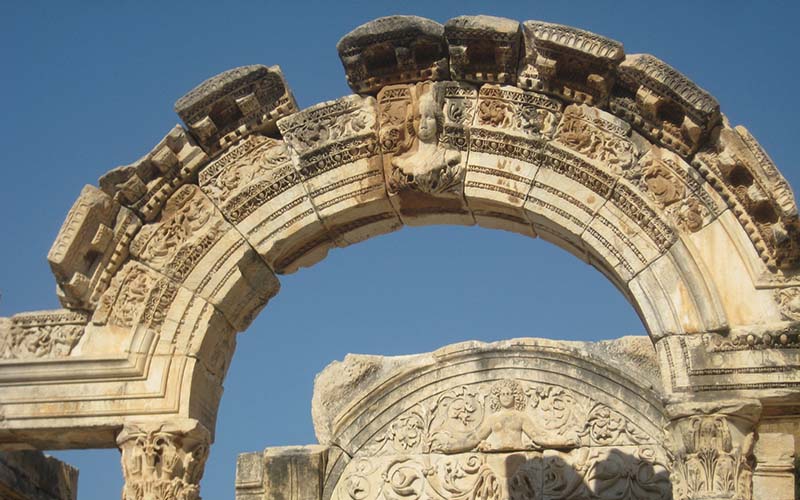
The iconic Temple of Artemis is one of the most prominent structures in Ephesus and one of the seven wonders of the ancient world. The temple is dedicated to the goddess Artemis but is also known as the Temple of Diana. It was completed around 550 BC and was built entirely from marble. Most of the temple has collapsed, and only a part of the structure and very few columns remain, but it is a must-visit for its historical significance.
-
Virgin Mary’s House
Virgin Mary was the mother of Jesus Christ and is believed to have spent her last days in this house in Ephesus. Hence, this place has gained a lot of historical importance, and thousands of visitors’ throng this place for its religious significance.
-
Library of Celsus
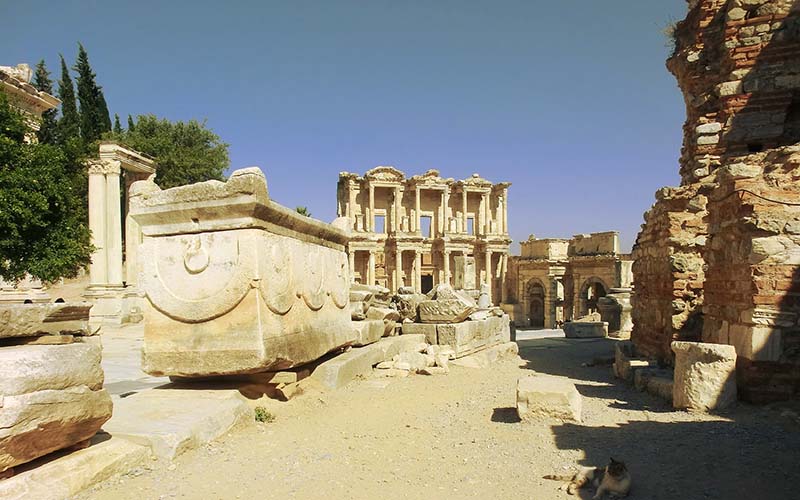
The Library of Celsus is one of the most breathtaking structures in Ephesus and was built more than 2,000 years ago. The exact year of completion is unknown, but it was built in memory of Tiberius Julius Celsus, an ancient Greek who served as governor in the Roman Empire and was a book lover. His tomb is under the ground floor in the library’s west wing. It is ranked the third largest library in the ancient world and a visit to this remarkable library remains will leave you tongue-tied.
-
Temple of Hadrian
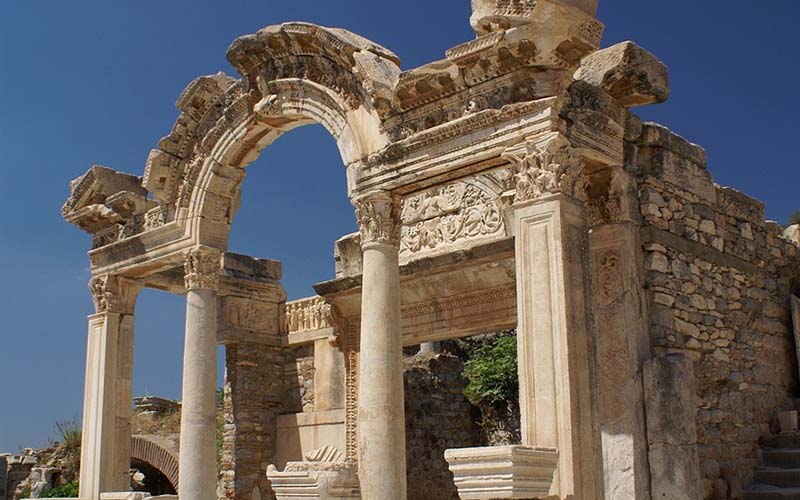
The Temple of Hadrian was built in honor of the Roman emperor Hadrian in the 2nd Century. You can even find bronze statues of the Roman Emperors Constantius, Diocletian, Maximian I, and Theodosius. The temple lies across the street from the Terrace Houses along Curetes Street and was renovated recently. After the renovation, the original statutes were replaced with replicas, and the originals were moved to the Ephesus Archaeological Museum.
-
Ephesus Ancient Theatre
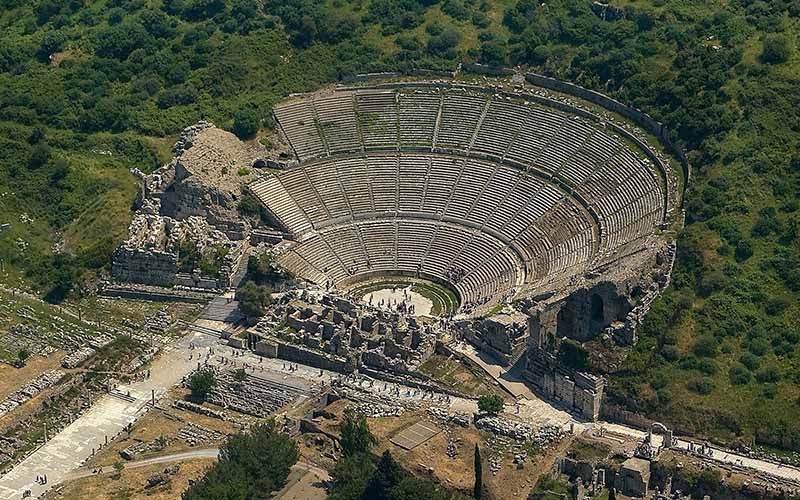
One of the most stunning attractions in Ephesus is the Great Theatre, and worth applying for a Turkey visa. It was erected on the slope of Mt. Pion, towering over the city at an altitude of 100 feet. It used to be a venue for gladiator fights, concerts, plays, and many political, philosophical, and religious discussions. The amphitheater could seat over 25,000 people and was one of the largest open-air theatres in the olden days. It is one of the finest examples of Greco-Roman architecture and a must-visit.
-
Basilica of Saint John
St John’s Basilica is one of the most majestic structures in Ephesus. It was built by the Byzantine Emperor Justinian and his wife, Theodora. It is located on the hill, and the tomb of St. John, the youngest apostle of Jesus, used to rest under the Basilica. But in the 12th Century, the remains of the sacred tomb were moved to the Church of Saints in Istanbul.
-
The Isa Bey Mosque
Isa Bey Mosque was built in Ayasuluk Hill in 1374-1375. It is a large rectangular structure measuring around 52 by 56 meters flanked by high walls of limestone and marble. It consists of various tombstones belonging to the Beyliks period in the garden. The west wall of the mosque is covered with marble, while the other three are made of cut stone. It is considered one of the best examples of Anatolian Mosque architecture and is the oldest active mosque in Turkey.
-
Aqueducts
Ephesus was very advanced and had an efficient aqueduct system which are still present. These aqueducts were in various sizes and supplied water to different areas of the city, such as sawmills, water mills, and several bath complexes.
-
Agoras
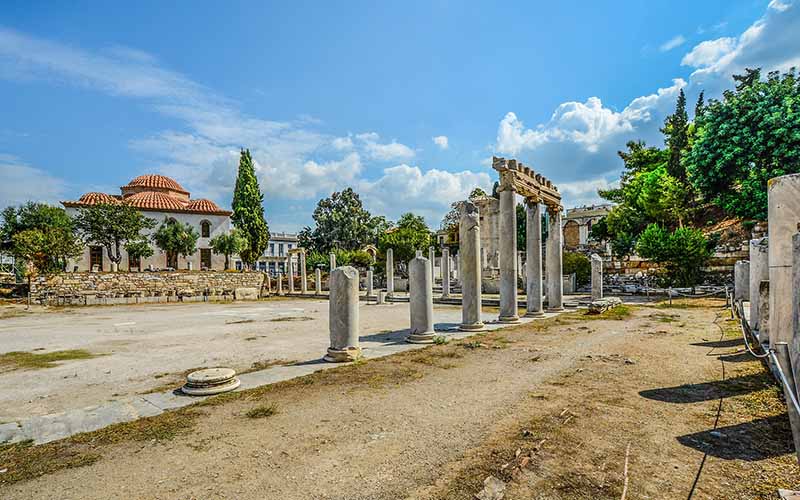
Ephesus comprised several agoras or marketplaces as the center of trade and culture. Locals bought daily wares and discussed matters of state. Throughout the ancient city, you will find many agoras that have been restored and reconstructed.
-
Ephesus Museum
Ephesus Museum consists of numerous archaeological remains found during excavations. These are some of the best-preserved works, and you will find artifacts from the Temple of Artemis and St. John’s Basilica, along with coins and other sculptures.
Conclusion
If you are a history buff, a visit to Ephesus will be one of the most enriching experiences of your trip to Turkey in September, December, or any specific month of your choice. But even if you are not, you must still visit this place to soak in its fascinating history and get a sneak peek into the bygone days of this marvelous city.
